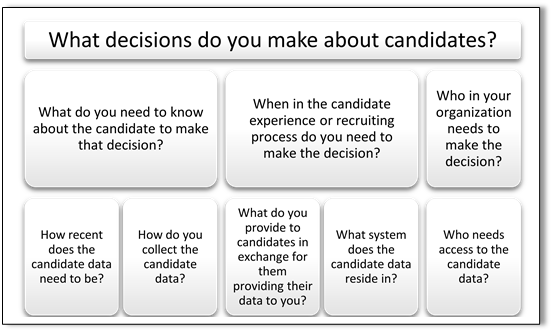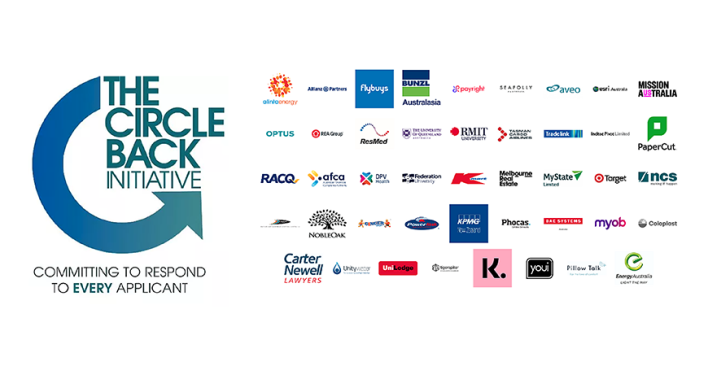Candidate Data Maps – Part 2 of Transforming Recruitment Marketing

This is the second in a five-part blog series on how to transform recruitment marketing to ensure it creates impact and value for your organisation.
Candidate data management is the most important capability recruitment marketing teams need to master in 2021. In the age of AI algorithms, having the right, most accurate and current information about candidates will make or break a Talent Acquisition’s capability to find and match top Talent to their organisation’s ever evolving collection of jobs.
For more on how I see recruitment marketing meeting this challenge see my first article in this five part series. In this second article I am going to break down what it means to create and leverage a candidate data map.

Much like you might create a site architecture map for a technology system or career site, in order to effectively manage candidate data so that it meets your business needs, you need to create a candidate data map. A document that defines what candidate data you need and when you need it in order to make Talent Acquisition decisions.
In addition, you need a clear understanding of where you will house the data, which roles or teams will need to access the data and how often the data should be refreshed for it to actionable.
Note, the main point in this exercise is to think through how you make decisions about candidates in your Talent Acquisition process and to get very specific about the data you need to collect from them in order to inform those decisions.
Think of this map as an extension of the standard mapping you may already have that helps you determine what information you need to collect to screen a candidate in or out for a role. If you think through the process critically you will uncover that there are multiple places in the Talent Acquisition process where you are making choices about how to prioritise a candidate, engage with a candidate, drive a candidate to conversion, move a candidate into your screening process etc… Each of these candidate actions, if you are making them in an unbiased fashion, should a standard set of candidate data that drives what decisions get made. The candidate did or did not have a certain skill. That candidate was or was not willing to work on a remote team, etc.
A strong candidate data map will start big as your teams download all of the possible things, they think they need to know about a candidate to manage a candidate’s progress and experience in your process.
As you start to push on the mapping and ask questions, like, how does that influence the decision or action your team needs to make or what would your team do if you could not find that information out about a candidate, you will discover the list starts to organically whittle itself down to a more realistic reflection of the real candidate data that influences decisions and actions your talent acquisition and business partners actually make.
This whittling down process is important because it helps align your team on not just what decisions need to be made, but also how they are made, and when decisions are made. This reduces the tendency to believe you need to know everything about a candidate immediately to start managing their experience or engagement with you.
You can document this mapping in lots a ways. Maybe you have a visual team and a Visio map might be helpful or perhaps creating a spreadsheet or decisions table works best for your team. How you document is not as important as the process of creating it and aligning around it.
Your candidate data map is going to be used to answer several key Talent Acquisition and recruitment marketing questions. Here are some initial thoughts to get you going. I expect there are even more questions you can apply this data mapping to as well.
What information should be collected about candidates?
- What information asks do you put on various Talent forms?
- What chat bot questions should be asked?
- What do you include in screening questions during lead capture vs role sourcing vs pre interview?
- What information needs to be included in your ATS application process vs could just be retrieved from your CRM database?
Where do you keep candidate data when you collect it?
- What fields are needed on a contact record in your CRM and in your ATS?
- What tags should be developed on a contact record in your CRM and based on what candidate data?
- What data integrations do you need between systems to ensure the right information is available, the right people have access to the information and candidates have a seamless experience?
How will you collect candidate data?
- What will be your engagement plan to entice candidates to provide you the information you need?
- What is the cadence you will use to ask candidates to update their information?
- What engagement could you automate to gather candidate data?
- How will you ensure you only collect relevant data and maintain data privacy?

Stay tuned for part 3: Knowing Your Target Audience Means Knowing What They Value and Why
Cover image: Shutterstock
This article first appeared on LinkedIn on 7 January 2021.
Related articles
Leave a Reply
Sign up to our newsletter
Get a weekly digest on the latest in Talent Acquisition.
Deliver this goodness to my inbox!


